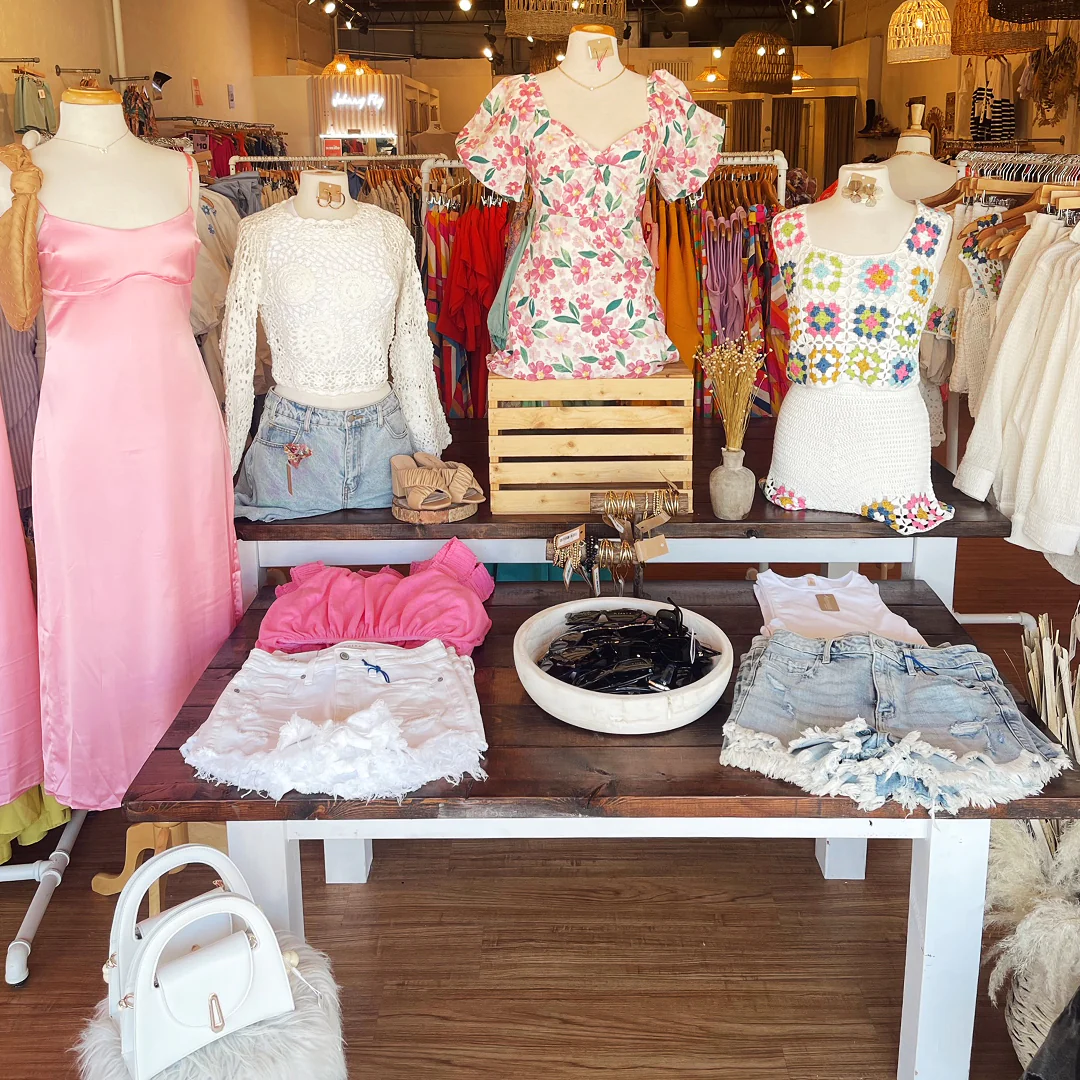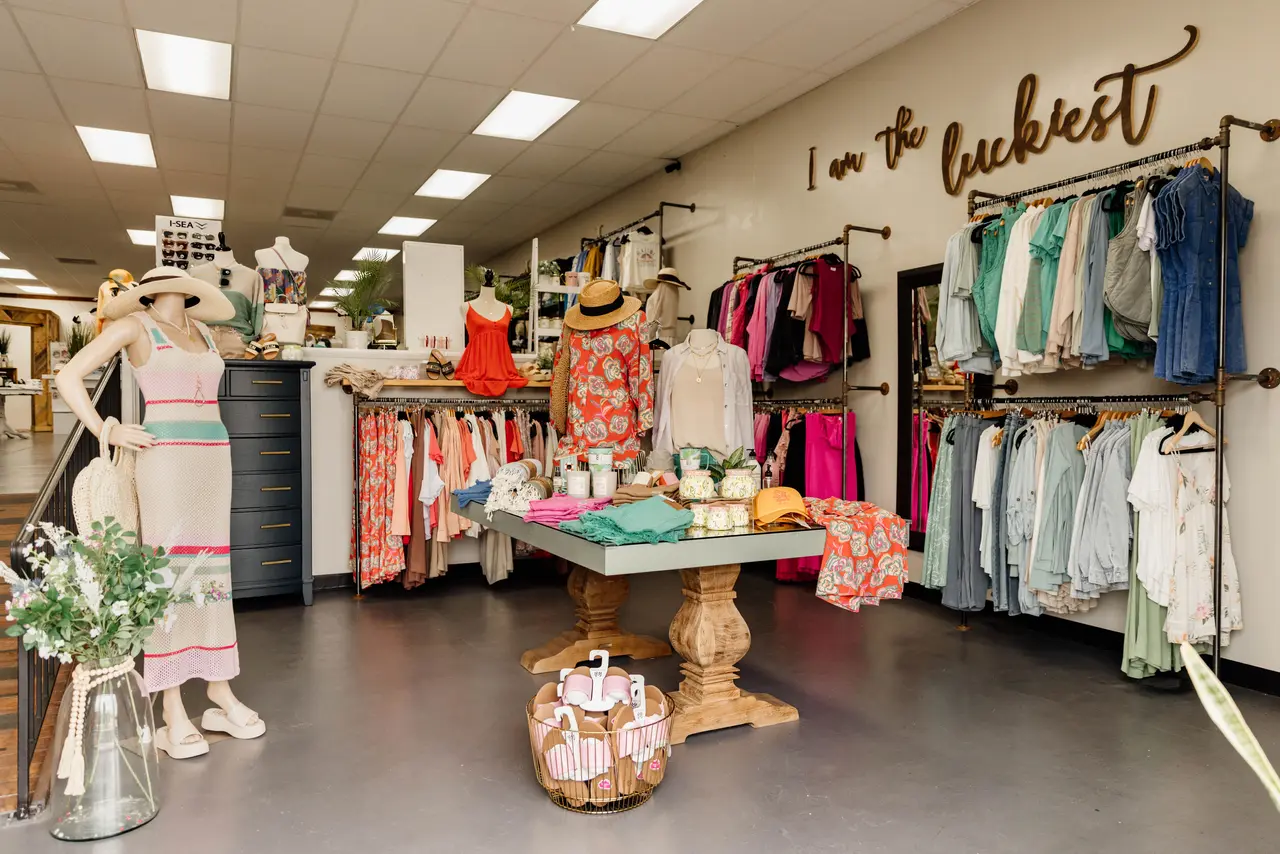Discovering the Advancement and Impact of Apparel on Modern Fashion Trends
The advancement of clothing has actually significantly influenced modern-day fashion trends, merging historical criteria with cutting-edge innovations. Legendary numbers like Coco Chanel and Yves Saint Laurent reinvented the apparel industry by introducing principles that focus on comfort and accessibility, which continue to resonate today. Technological strides in areas such as 3D printing and clever fabrics are redefining style possibilities and consumer experiences (boutique fashion). In addition, the growing emphasis on inclusivity and sustainability is reshaping industry criteria. As we take into consideration these diverse impacts, one should wonder about exactly how these elements collectively redefine fashion's duty in showing and forming contemporary culture.
Historic Style Influencers
In the tapestry of style background, certain figures have left an enduring mark, forming the patterns and designs that define entire periods. Coco Chanel, an innovative designer, redefined ladies's fashion by presenting comfortable, classy garments that left from restrictive bodices.
Elsa Schiaparelli is one more essential number, renowned for her progressive styles that integrated surrealist art, working together with Salvador Dalí to create wayward items that tested conventional aesthetic appeals. Her ingenious use of color and bold patterns reverberates in modern style. Yves Saint Laurent, meanwhile, equalized haute couture with prêt-à-porter collections, bringing runway styles to the masses and setting a criterion for modern-day ready-to-wear lines.
These dreamers, amongst others, not just transformed fashion in their times yet likewise established enduring trends that resonate in today's apparel industry, offering a foundation upon which modern-day designers remain to develop and innovate. Their heritages emphasize the importance of creative thinking and bold in style's ever-evolving story.
Technical Innovations in Fashion
Among the dynamic landscape of the fashion business, technical innovations stand at the center of technology, improving how developers develop and customers involve with style. The integration of 3D printing has actually revolutionized style processes, allowing designers to explore intricate structures and sustainable products that were previously inconceivable. This modern technology helps with quick prototyping, minimizing waste and expediting production times.

Smart textiles, installing technology into textiles, are also transforming the market. Advancements like self-cleaning and temperature-regulating fabrics use enhanced performance and convenience. Wearable technology, including functions like fitness monitoring and interaction, adds a new dimension to style, combining aesthetic appeals with functionality.
Social Changes and Design
As technical improvements proceed to reshape the apparel industry, social shifts are similarly significant, redefining style and customer choices. In recent years, the rise of social media sites systems has actually sped up the dissemination of worldwide style fads, enabling diverse social impacts to exist side-by-side and merge. This electronic interconnectivity has helped with the fast exchange of ideas, bring about a much more comprehensive and diverse analysis of design that shows the complex nature of contemporary culture.
Cultural understanding and admiration have actually prompted designers to attract inspiration from a wider range of historic and ethnic contexts, integrating conventional motifs with modern visual appeals. This blend has caused fashion that resonates with a broader audience, advertising a feeling of identity and belonging across various demographics. Furthermore, the enhancing need for personalization has actually driven brand names to offer customizable choices, making it possible for consumers to express uniqueness while reflecting their cultural heritage.
Moreover, moving societal worths have actually impacted style, with inclusivity and variety coming to be central styles. The sector has actually begun to embrace models and influencers of different body kinds, ethnicities, and sex identities, difficult conventional elegance standards. This transformation underscores the power of cultural changes fit the future of style, as design comes to be a more authentic expression of individual and collective identity.
Sustainability and Modern Design
While the garment industry remains to progress, the important for sustainability has actually ended up being significantly immediate, influencing modern design practices. This shift aims to deal with honest factors to consider and environmental worries, bring about a reevaluation of typical production approaches. Developers are now incorporating lasting products, such as natural cotton, recycled polyester, and naturally degradable fabrics, into their collections, minimizing the ecological footprint of fashion. The rise of sluggish style, which stresses top quality over quantity, urges consumers to purchase classic items as opposed to short-term patterns.
In addition, modern-day style is characterized by its development in lessening waste and advertising circularity. Techniques such as zero-waste pattern cutting and 3D knitting are why not try here getting grip, permitting developers to produce garments with very little textile wastage. In addition, brand names are adopting transparent supply chains, making sure liability and promoting consumer trust fund. This approach not just minimizes ecological effect yet likewise improves the social responsibility of style houses.

Future Trends in vogue

Sustainability will certainly remain to be a driving force in shaping future fashion trends. The sector is progressively embracing eco-friendly materials and ethical manufacturing techniques, replying to a growing customer demand for liable practices. Developments such as bio-fabricated products and closed-loop recycling systems are readied to redefine exactly how garments is generated and taken in, decreasing ecological influence while keeping design and have a peek at this website high quality.
Social shifts, consisting of the increase of inclusivity and diversity, will certainly likewise play a pivotal duty. As society comes to be much more conscious of social issues, style is expected to end up being a system for expression and modification. Developers will likely concentrate on developing collections that show a broader array of identities and experiences, championing representation and access.
Final Thought
The advancement of clothing considerably impacts modern-day fashion patterns, where historical impacts merge with contemporary layouts. Secret numbers like Coco Chanel and Yves Saint Laurent have review actually redefined design, while technological advancements such as 3D printing and smart textiles increase creative possibilities. Social shifts towards inclusivity and sustainability urge brand names to accept and take on honest techniques variety. This recurring evolution emphasizes style's role as a mirror to social worths and technical innovation, recommending a future abundant with technology and inclusivity.
The development of apparel has significantly influenced modern-day style patterns, combining historic criteria with innovative advancements.Amidst the dynamic landscape of the style industry, technical developments stand at the forefront of innovation, improving exactly how designers develop and customers engage with style.While the fashion sector continues to develop, the imperative for sustainability has ended up being significantly urgent, influencing modern-day layout methods. As sustainability becomes embedded in modern design, it leads the method for an extra aware and liable fashion industry.
The advancement of apparel substantially influences contemporary style trends, where historic impacts combine with contemporary designs.
Comments on “Why Boutique Fashion is the Ultimate Option for Special Style”